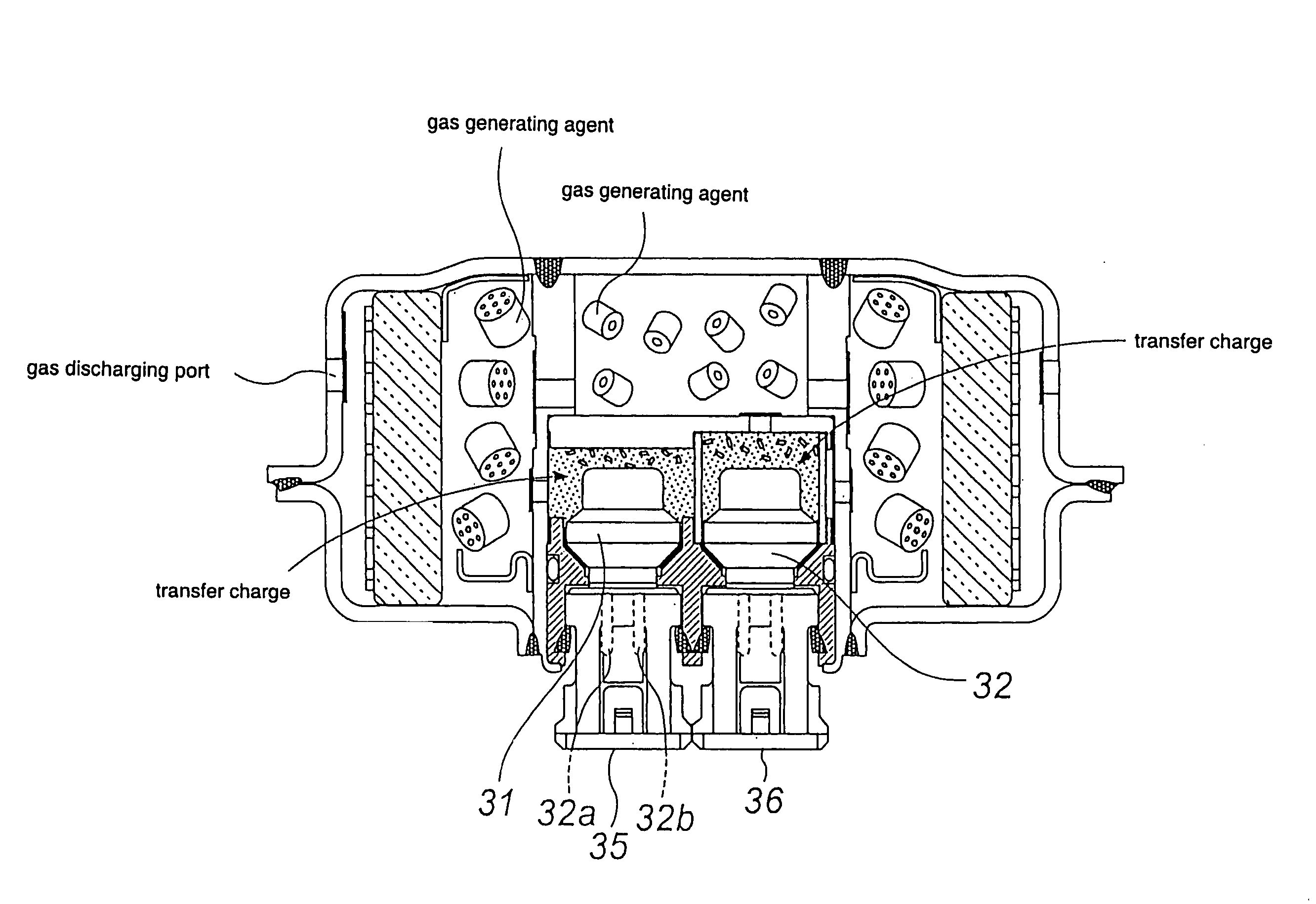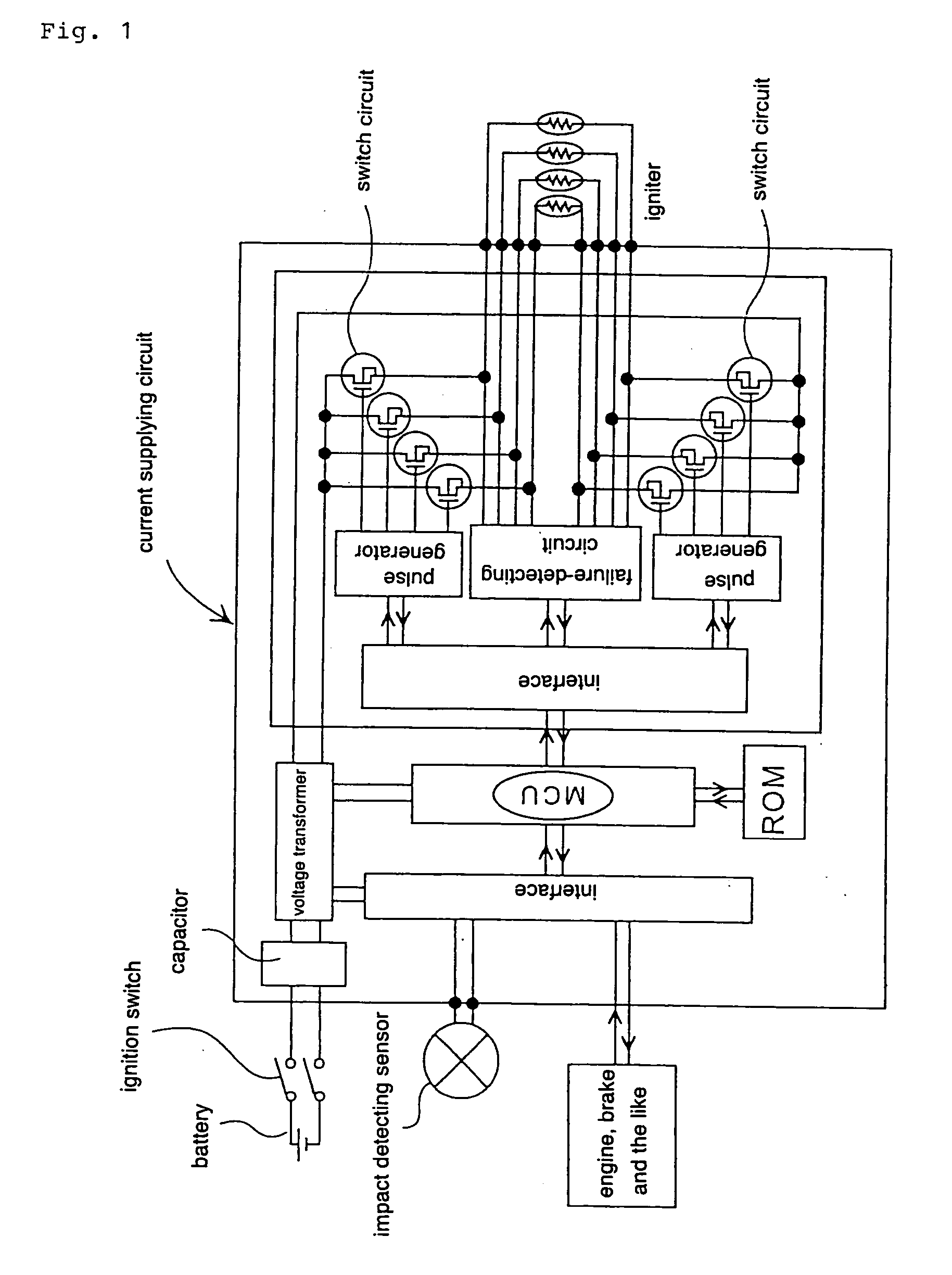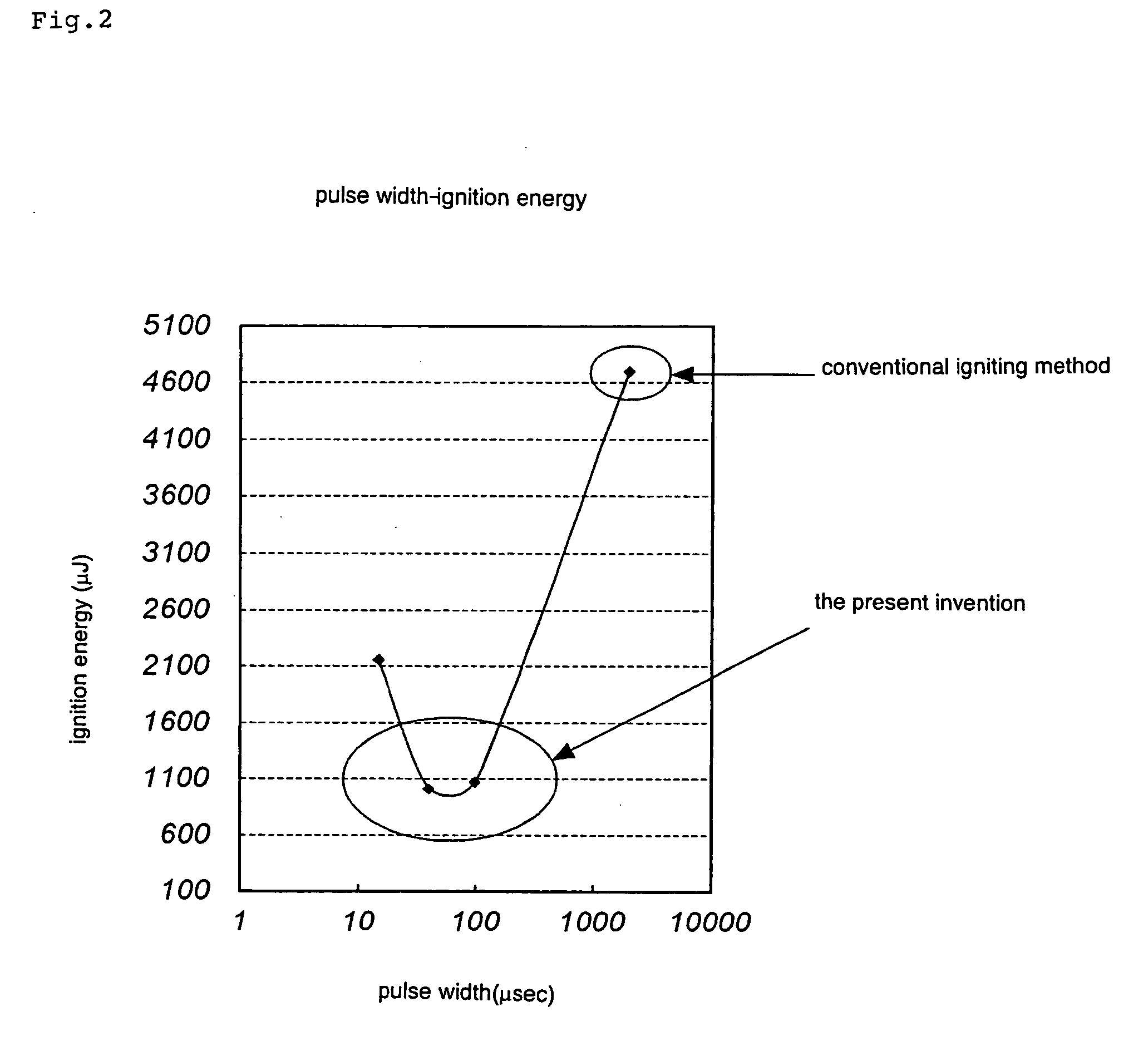Current supplying circuit
- Summary
- Abstract
- Description
- Claims
- Application Information
AI Technical Summary
Benefits of technology
Problems solved by technology
Method used
Image
Examples
first embodiment
[0029] (1) First Embodiment
[0030] An embodiment of the present invention will be explained below with reference to the drawings. FIG. 1 is a conceptual diagram of a current supplying circuit of the present invention, and the current supplying circuit is provided in an ECU.
[0031] A current supplying circuit is constituted by arranging respective elements of at least a switch circuit, a pulse generator, a disconnection detecting circuit, a voltage transformer, a capacitor and the like on a substrate, and it is provided in a midway of a current path connecting a battery which is an external power source and igniters incorporated into gas generators. Two current paths are provided for each igniter and formed by two conducting wires (lead wires).
[0032] The switch circuit which opens or closes the current path and blocks a current when it is unnecessary to actuate an igniter to start supplying a current at a time of actuation of the igniter is provided in the current supplying circuit, an...
experimental example 1
[0042] A test circuit shown in FIG. 7 was used as the current supplying circuit, and it was recorded such that each switch circuit was supplied with currents supplied from the power source, being adjusted to have ignition pulses with widths of 15 .mu.sec, 40 .mu.sec, 100 .mu.sec and 2000 .mu.sec.
[0043] A general igniter shown in FIG. 3 was used as the igniter. In the igniter, the heat generating portion was constituted by connecting a metal thin wire, which was a resistance heat generating body (resistance=2 .OMEGA.), between electrodes by a resistance-welding, ZPP of 60 mg was used as the priming, and the heat generating portion and ZPP were maintained in a cup such that they were press-contacted with each other. The igniter were connected to conducting wires at two pin portions, and it was connected to a direct-current source via the current supplying circuit shown in FIG. 7.
[0044] Under these experimental conditions, the combustion state of the priming when a current was supplied...
second embodiment
[0049] (2) Second Embodiment
[0050] Next, an embodiment of an air bag system of the present invention using the above-described current supplying circuit will be explained with reference to FIG. 1 to FIG. 6. FIG. 5 and FIG. 6 are sectional views of general gas generators in the radial direction, FIG. 5 showing a gas generator of a single type having a single igniter, and FIG. 6 showing a gas generator of a dual type having two igniter.
[0051] As shown in FIG. 4, an air bag system mounted in a vehicle comprises an ECU connected to a power source (a battery) and an impact detecting sensor, and plural module cases accommodating plural gas generators and air bags, which is connected to the ECU, wherein each of the ECU and individual gas generators is connected separately by conductors, and the current supplying circuit as shown in FIG. 1 is provided in the ECU.
[0052] As the gas generator accommodated in the module case, one of the single type shown in FIG. 5 or one of the dual type shown ...
PUM
| Property | Measurement | Unit |
|---|---|---|
| Weight | aaaaa | aaaaa |
| Current | aaaaa | aaaaa |
| Width | aaaaa | aaaaa |
Abstract
Description
Claims
Application Information
 Login to View More
Login to View More - R&D
- Intellectual Property
- Life Sciences
- Materials
- Tech Scout
- Unparalleled Data Quality
- Higher Quality Content
- 60% Fewer Hallucinations
Browse by: Latest US Patents, China's latest patents, Technical Efficacy Thesaurus, Application Domain, Technology Topic, Popular Technical Reports.
© 2025 PatSnap. All rights reserved.Legal|Privacy policy|Modern Slavery Act Transparency Statement|Sitemap|About US| Contact US: help@patsnap.com



